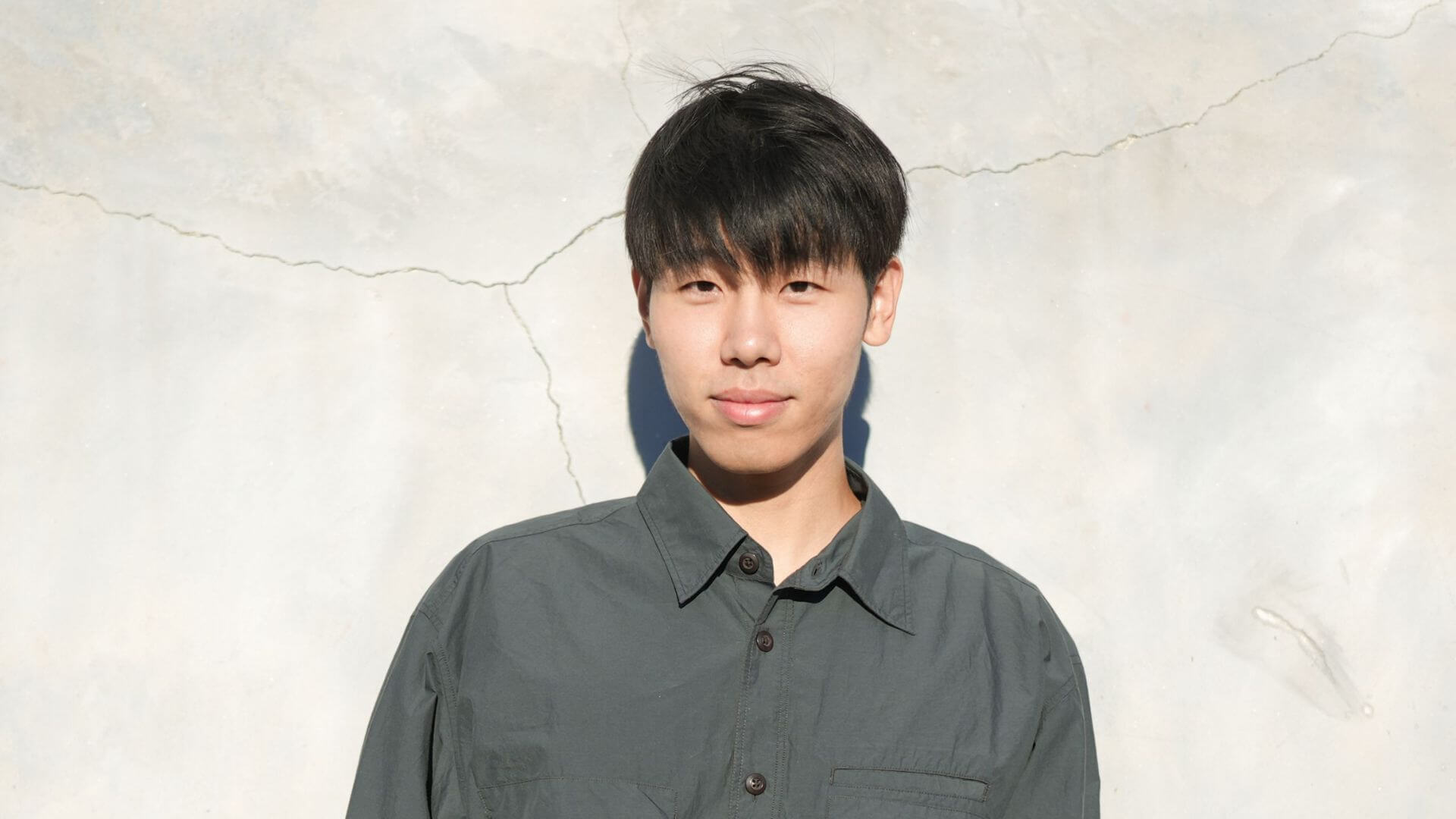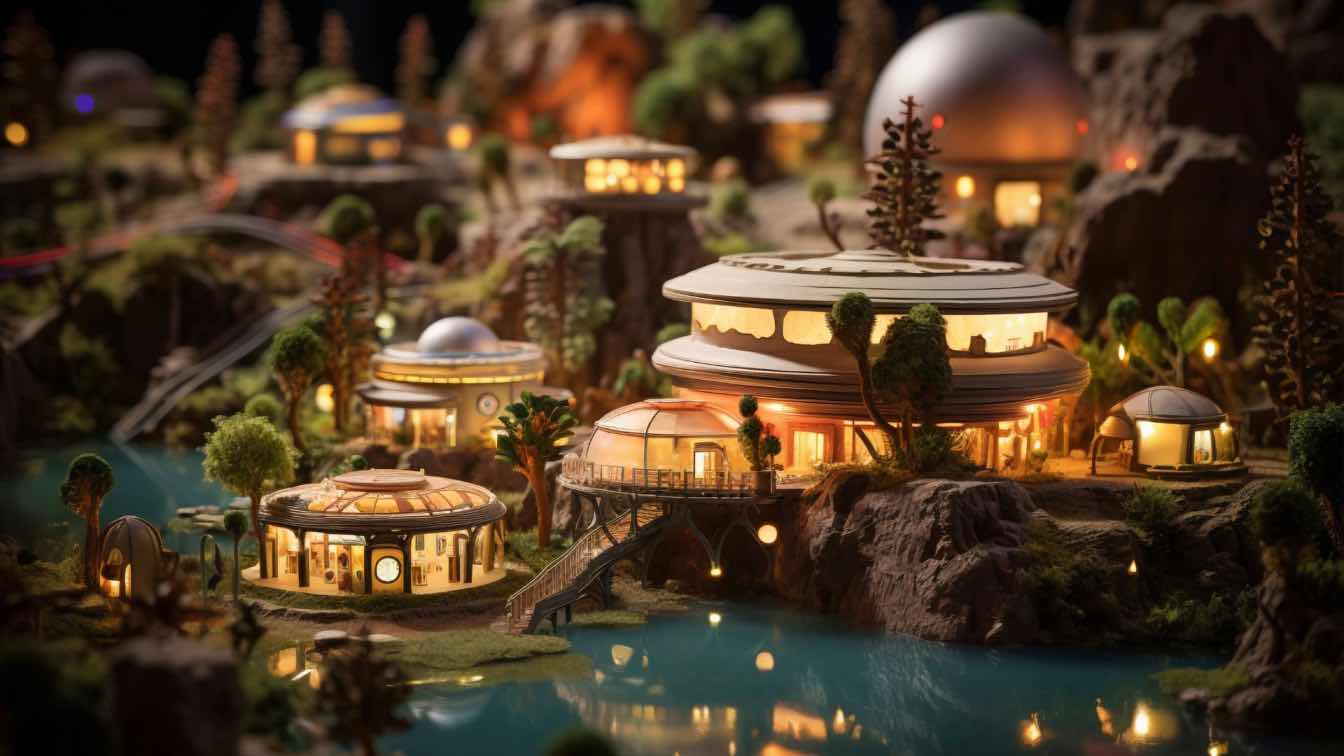Recently, Los Angeles–based architectural designer Zijie Wei earned international recognition as a Finalist in TerraViva's Easdale Ferry Office competition. Regarded as one of the most respected platforms for experimental and socially engaged architecture, TerraViva attracts top talent worldwide. His proposal, poetically named "Orenda," reimagined a humble ferry terminal on a Scottish isle into a vibrant nexus of past and future. The design anchors itself in Easdale's heritage by preserving the old stone ferry cottage as a foundation, adaptive-reusing it as part of a new ferry office. Rising from this historic base, Wei's modern intervention unfolds in dynamic forms that echo the island's slate landscape and rugged shores. Orenda features a sweeping contemporary structure emerging from the restored cottage, its slate textures and glass surfaces reflecting the surrounding scenery. The result is an architectural dialogue between old and new – a ferry office that honors local history while embracing innovative design. This finalist honor at TerraViva is the latest in a string of accolades for Wei, spotlighting his ability to marry context with creativity on the global stage.

A Spiraling Studio Vision
Just months before Orenda's success, Wei clinched First Prize in the Archiol "Designer's Den" 2024 competition – a challenge to envision an ideal architect's studio. Hosted by Archiol, a prominent international design platform known for spotlighting innovative architectural thinking, the Designer’s Den competition is recognized for its rigorous jury process and global reach. Wei and his team created a concept defined by a dramatic spiral form. The proposed studio is shaped as a rising spiral with continuously changing height, generating a sequence of dynamic, light-filled spaces. In plan and section the studio unfurls like a coil, incorporating multi-level work areas and a central void that opens downward through the floors. This bold form serves more than aesthetics: it carves out varied zones ranging from open galleries to tucked-away nooks, offering "varying levels of solitude" within one continuous environment. Wei's design integrates function and philosophy – the spiral's cloud-like roof and clean concrete walls create an inspiring yet pragmatic workspace, while its interior organization reflects a thoughtful understanding of human needs. "For individuals, it can provide privacy when you need a private space," Wei notes, "and it can also allow you to quickly transition to public activities… to communicate with others." This fluid adaptability, he explains, makes the studio's small community "more harmonious". In other words, the design fosters focus and retreat without sacrificing collaboration – an architectural embodiment of flexibility. Wei's award-winning studio scheme also showcases his attention to clarity and structure. The spiral layout is both visually striking and logical, organizing studios, exhibition areas, and meeting spots along a clear continuous path. His team integrated sustainability from the outset: a faceted, leaf-like roof form filters sunlight and harvests rainwater, proving that environmental strategies can be beautiful design drivers. "Sustainable design should be integrated from the beginning… it's the starting point that fundamentally shapes the building's form," Wei emphasizes. Indeed, features like passive shading louvers and skylights were not tacked on, but rather formed the genesis of the studio's architecture. By marrying ecological responsiveness with creative form, the project exemplifies Wei's broader approach – architecture that is as innovative as it is responsible.

Roots in Jingmen
To understand Wei's design philosophy, one can trace it back to his roots. Born and raised in Jingmen – a historic city in central China's Hubei province known for scenic landscapes and ancient architecture – Wei grew up surrounded by a rich dialogue between nature and built heritage. This upbringing instilled an early appreciation for environments where history and landscape intersect, a theme now evident in works like Orenda. His formal journey in architecture began at Huazhong University of Science and Technology (HUST) in Wuhan, where he earned his bachelor's in architecture with distinction. During his studies, Wei dived into experimental building techniques, notably working with bamboo – one of Asia's oldest construction materials. In 2018, he led a ten-member student team to Third Prize in a major international bamboo architecture competition, crafting an inventive pavilion that merged traditional craft with modern design. The following year, he again won recognition with an Honorable Mention in a national bamboo design-build contest, this time guiding a dozen classmates in constructing a bold bamboo structure. These hands-on competitions were more than just early awards; they were formative experiences that shaped Wei's outlook. "Bamboo taught me about adaptability and working with nature's constraints," he reflects, describing how designing with live materials and tight budgets in rural settings gave him a grounded, resourceful approach to architecture. It's a sensibility that carries into his work today – balancing imagination with pragmatism. Eager to deepen his theoretical foundation, Wei pursued graduate studies in the United States. He earned a Master of Architecture from the University of Pennsylvania's Stuart Weitzman School of Design in 2022. There, he honed a keen interest in the inner logic of architectural form – how geometry, structure, and program can coalesce into meaningful design. One of his studio projects, a visionary scheme for a new Aga Khan Museum of Islamic and Contemporary Art, was published in Penn's design journal Pressing Matters. This academic acclaim hinted at Wei's emerging voice: bold forms grounded in rigorous concept. By the time he graduated and moved west to California, he had developed a clear intent to create architecture that engages both mind and emotion.

Leading Educational Design in California
Since 2022, Wei has been a driving force at Berliner Architects, a Los Angeles–based firm renowned for educational and community projects. Joining as an architecture designer, he quickly proved himself indispensable in a series of complex school designs across California. Wei has contributed to projects for major public school districts – including outdoor learning environments for the Los Angeles and San Francisco Unified School Districts – as well as new facilities for charter and independent schools. From reimagining a science academy campus in urban L.A. to upgrading historic private school buildings, he has become deeply involved in shaping spaces where students learn and thrive.
Now, Zijie Wei is increasingly recognized as one of the leading designers in the industry– a distinction earned through both ideation and impact. His design philosophy centers on the idea that architecture shapes human experience at every scale. In Wei's view, a well-designed space should provide clarity and structure but also freedom: it should offer shelter for solitude and reflection as readily as it encourages communal interaction. This ethos is evident in his work – from a ferry office that doubles as a public plaza to a spiral studio where one can tuck away alone or gather with colleagues on a whim. "Unlike a traditional grid of rooms, a free-form space makes people more relaxed and focused," Wei observes, noting how openness and gentle curves can dissolve the stress of confinement. Yet he is careful to avoid design for design's sake. Every gesture in his projects serves a purpose, whether to frame a view, support a collaborative moment, or respond to the local climate. He prioritizes adaptability – spaces that can evolve with changing needs – and embeds resilient features like natural ventilation and rainwater collection so that buildings inherently work with their environment. Wei's rise from a small city in Hubei to international architectural circles has been driven by a consistent vision: that architecture must be both imaginative and responsible, intimately tied to how people live. As he puts it, architects have a duty to shape settings that elevate everyday life – spaces that invite creativity, foster community, and stand the test of time. With a portfolio already rich in award-winning ideas and built work enhancing schools and communities, Zijie Wei exemplifies a new breed of architect — one who balances vision with precision, and artistry with social purpose. It's a balance he continues to refine, and one that positions him at the forefront of architecture's next generation.






